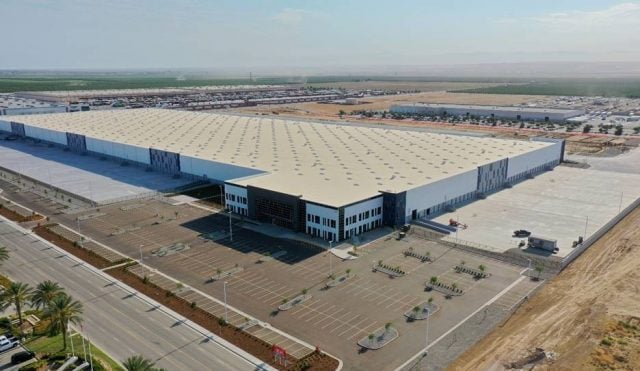LOS ANGELES—Successful retailers are using the current market to gain market share and they are once again actively seeking deals that make sense for their business plan. That is according to Stephanie Skrbin, principal and retail specialist at Lee & Associates-LA. Skrbin recently chatted with GlobeSt.com on the main considerations for retailers in new locations, on e-commerce, suburban vs. urban and more.
GlobeSt.com: What are the main considerations for retailers as they assess new locations today?
Stephanie Skrbin: Retailers are focused more than ever on A+ locations so they don't find themselves in the position they were in back when the recession began. Prior to the recession when consumer spending was at an all-time high, many retailers focused on expansion for expansion's sake. Now tenants need to justify their expansion choices from an ROI point of view. They are focused more than ever on A+ locations, and they are scrutinizing expansion opportunities from every angle from location to demographics, visibility, traffic patterns, accessibility and retail synergy.
GlobeSt.com: Are they measuring these elements differently than they did in the past? In other words, if a certain threshold of traffic was 'good enough' before, is it still sufficient or do they require stronger numbers?
Skrbin: Sales forecasting has become more conservative, and that is limiting the number of new store openings and having an impact on where retailers choose to locate. When the recession hit, rents had peaked and the lower sales volumes brought about by the business downturn no longer justified those rent levels. So we went through a period when rents were quite depressed, but rents have been steadily increasing in the last two years, and landlords in strong trading areas are not getting any pushback from tenants with these higher rents. In fact, in some areas rents are even somewhat higher than they were before the recession.
GlobeSt.com: What are some of the other differences you are seeing now versus five years ago?
Skrbin: Location is still key, so that hasn't changed. Successful retailers are using the current market to gain market share and they are once again actively seeking deals that make sense for their business plan. In the Big Box arena we are seeing retailers adjust to smaller footprints that allow them to be more efficient and to penetrate urban markets.
GlobeSt.com: How has the growth of e-commerce affected store size or the kinds of build-outs retailers want today?
Skrbin: It's a little different depending on which sector of retail you are looking at. In general, retailers have been forced to look at their traditional footprint and decide if it is the most efficient one for their needs. Those that have seen a sizable portion of their business shift to the online arena don't need the same store space if they have a distribution center fulfilling online orders. Best Buy, for instance, is doing a smaller footprint in new stores because they know that many of their customers are searching online and buying online. On the other hand, department stores, many of which were built on customer service and face-to-face contact, are working hard to establish a strong online presence, but they still want to allow customers to pick up their orders at the store, so that is not having as great an impact on their traditional footprint. We are also seeing more retailers who got their start in the e-commerce space move into brick and mortar stores because it gives them an opportunity to fine tune their business and get more immediate feedback about their merchandise mix from their customers. Birchbox is one recent example of a retailer that originated online but is now moving into the brick and mortar space. So we will probably see more online retailers do that as well, and as they get more experience with their customers we may see differences in store size or the types of build-outs they require.
GlobeSt.com: Has the way negotiations proceed today changed over the past five years?
Skrbin: We're seeing more tenants ask for 'right to terminate' clauses and 'ongoing co-tenancy' clauses. It's part and parcel of the whole focus on greater scrutiny and the more conservative outlook. Retailers want to be protected if the location does not meet their sales expectations, and they want to be protected if something should happen in the center, as it did when the recession struck, and an anchor or a large portion of the center becomes vacant. These clauses have been in use for many years, but we're seeing them more today. We're also seeing landlords ask for similar protections if, for instance, a retailer's sales do not meet expectations. Landlords too are cognizant of making maximum use of the space they have, and they don't want to be saddled with a tenant whose sales are not up to their expectations.
GlobeSt.com: What are some of the differences between how urban and suburban locations are being evaluated?
Skrbin: Some tenants have a strong base in suburban markets and those tenants are continuing to expand in those areas. Newer concepts tend to want to start out in urban locations because the densities are greater and that provides them with a greater likelihood of success. Then too, big box stores, which have traditionally been in suburban areas because of their size requirements, are more frequently exploring urban locations. Even though these locations require a smaller footprint than these big boxes are used to, these urban markets provide a good opportunity for building their sales base.
© Touchpoint Markets, All Rights Reserved. Request academic re-use from www.copyright.com. All other uses, submit a request to [email protected]. For more inforrmation visit Asset & Logo Licensing.







